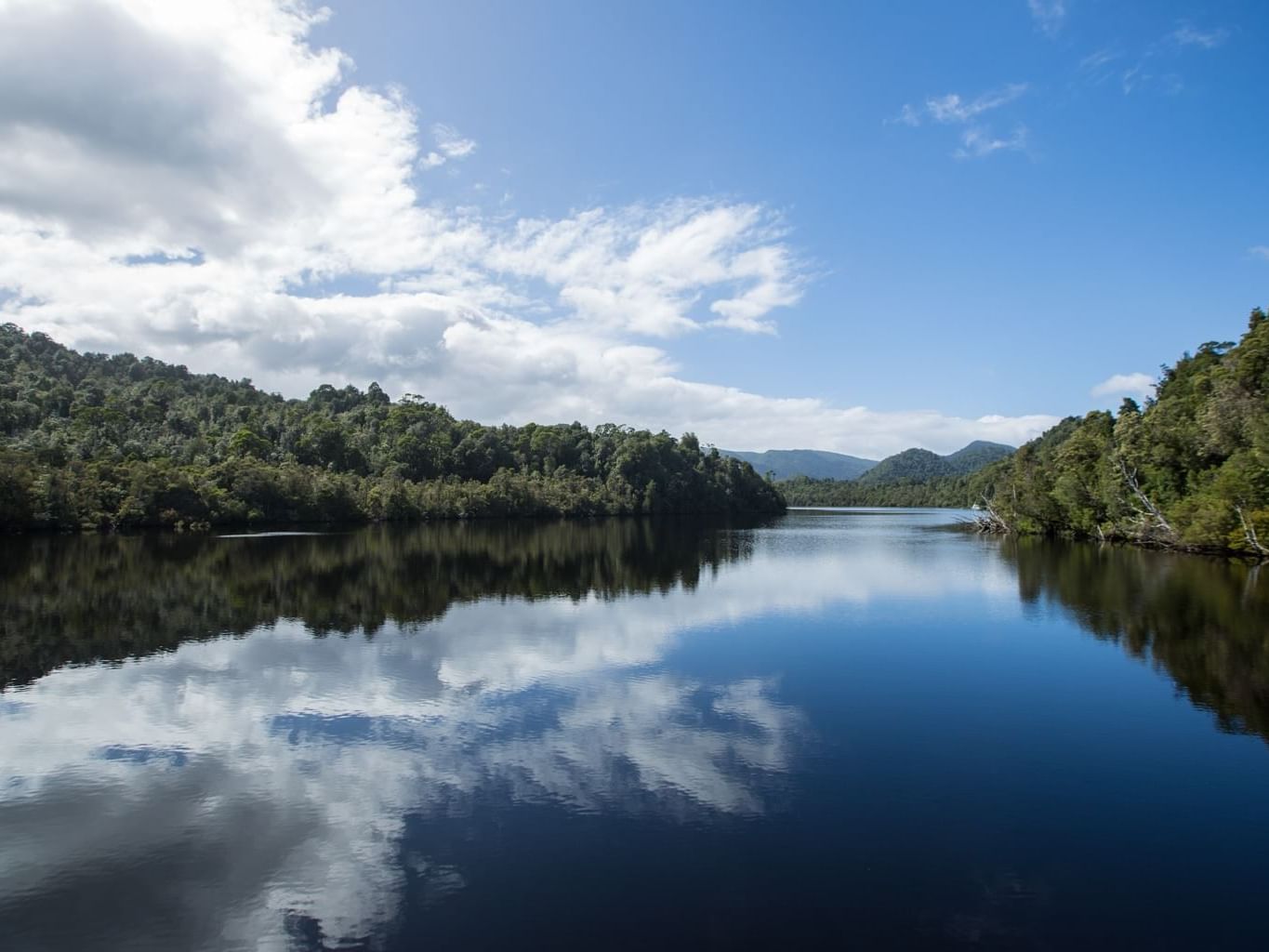The Original People of Tasmania's West Coast
Tasmanian Aboriginal people have been part of this land for more than 35,000 years. Sometime during the last Ice Age, Aboriginal tribes crossed the land bridge spanning Bass Strait, becoming the most southerly-dwelling humans on Earth. When the glaciers retreated and sea levels rose around 12,000 years ago, Tasmanian Aboriginals became isolated from the mainland, developing a rich culture unlike any other on the planet.
Macquarie Harbour
The area around Macquarie Harbour is the traditional land of the Lowreenne and Mimegin bands, which comprised the Toogee tribe. The area was also visited by other bands, including the Peternidic (Pieman River) band from the north west, and the Ninene (Port Davey) people (Port Davey) of the south west tribe. This movement extended up and down the west coast, as far as Cape Grim, as people followed seasonal food sources and traded with one another.
Macquarie Harbour offered Aboriginal people an abundance of food, including shellfish, seals, muttonbirds and penguins. Fire was also used to clear vegetation and encourage grasslands, where wallabies, wombats and other game could be more easily hunted
An account by an early European explorer describes Aboriginal people crossing Macquarie Harbour on boats ‘… made of bundles of the paper-like bark of the swamp tea-tree, lashed side by side, by means of tough grass.’
Ancient stories
Evidence of Aboriginal culture can still be found along the west coast, making this a place of deep spiritual and cultural significance to today’s Tasmanian Aboriginal community.
These include shelter sites—circular depressions in the earth that mark the location of durable huts, which were made of tea tree and bark, and thickly insulated with feathers and grasses. Middens also survive, some thousands of years old, containing remnants of shells, bone and charcoal and stone artefacts.
Some of the most fascinating Aboriginal artefacts are made of Darwin glass—a hard, black silicone glass that was much prized for tool making. Darwin glass is thought to originate in the Darwin crater—a suspected meteor impact site within the Franklin-Gordon Wild Rivers National Park.
Kutikina cave
One of the west coast’s most significant Aboriginal sites is Kutikina Cave—an Aboriginal rock shelter on the Franklin River.
Kutikina was discovered in 1977 by geomorphology student Kevin Kiernan, and was explored by archeologists in 1981 at the height of the controversial Franklin dam campaign.
The excavations revealed thousands of bone fragments and stone artefacts, making Kutikina one of the most important archaeological sites ever found relating to Ice Age human culture.
The discoveries had a major impact on the Franklin campaign, and contributed to the river’s inclusion on the UNESCO World Heritage List and the ultimate decision to halt construction of the dam and protect the Franklin and Gordon Rivers for all time.
In fact, Kevin Kiernan originally named the cave Fraser Cave, to attract the attention of then-Prime Minister, Malcolm Fraser, and highlight the significance of the Franklin River and south west Tasmanian wilderness.
